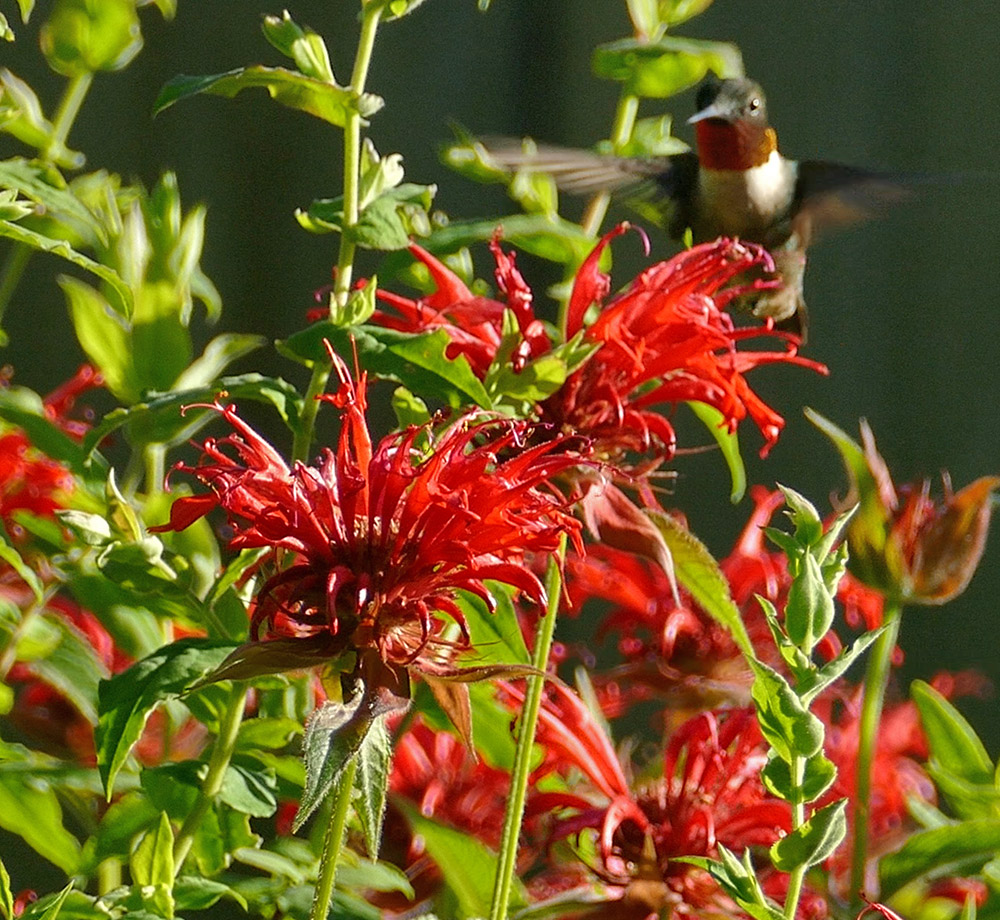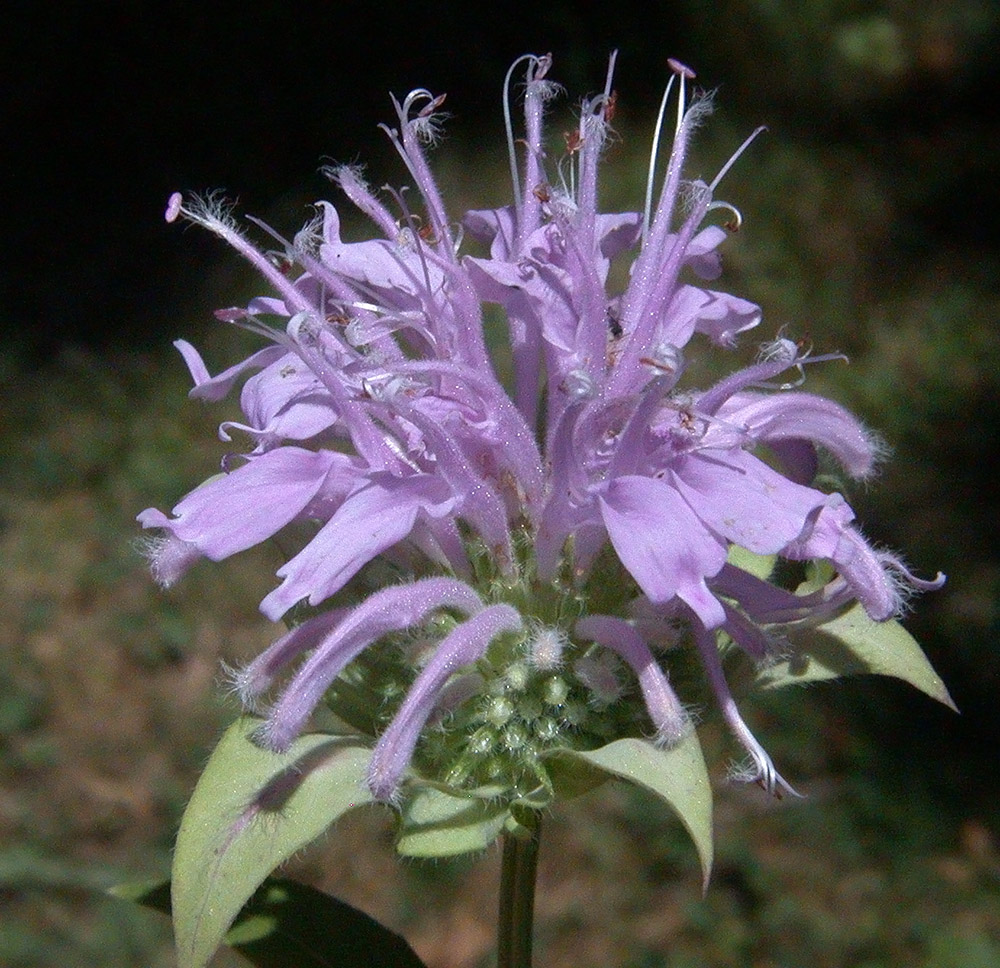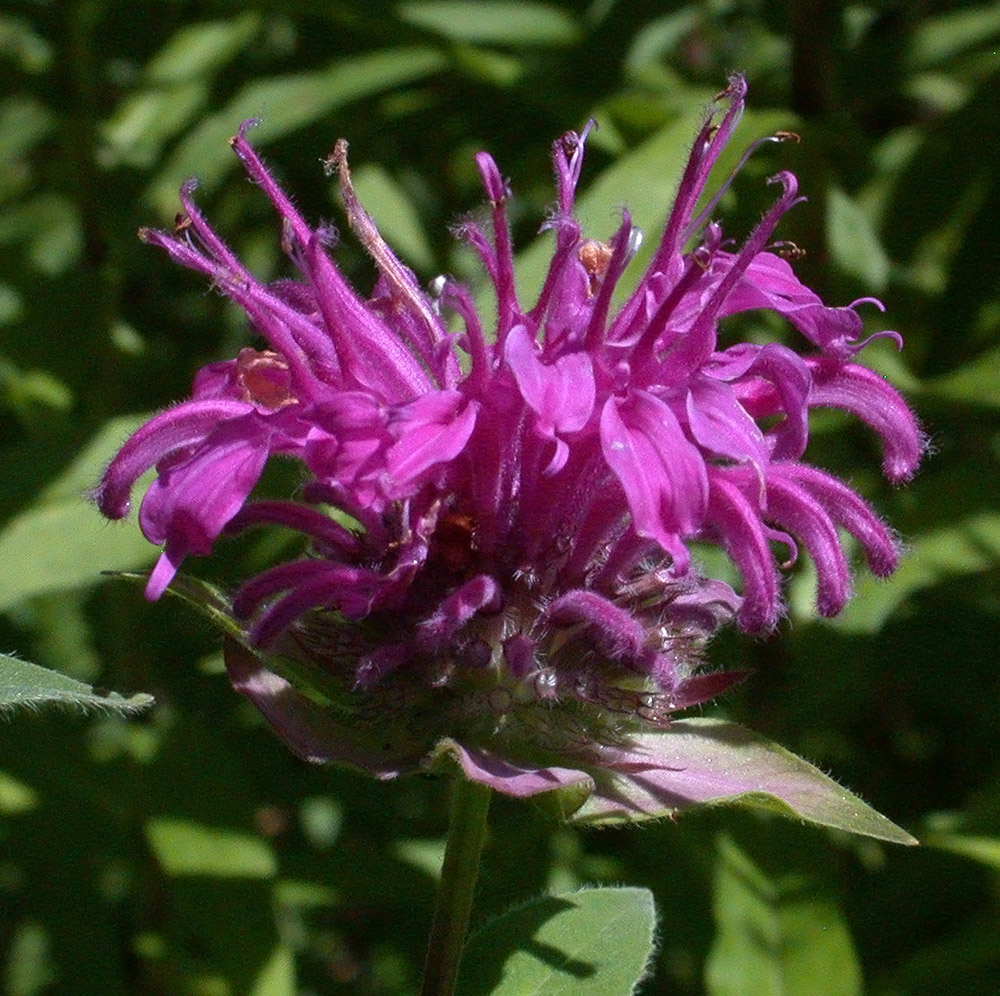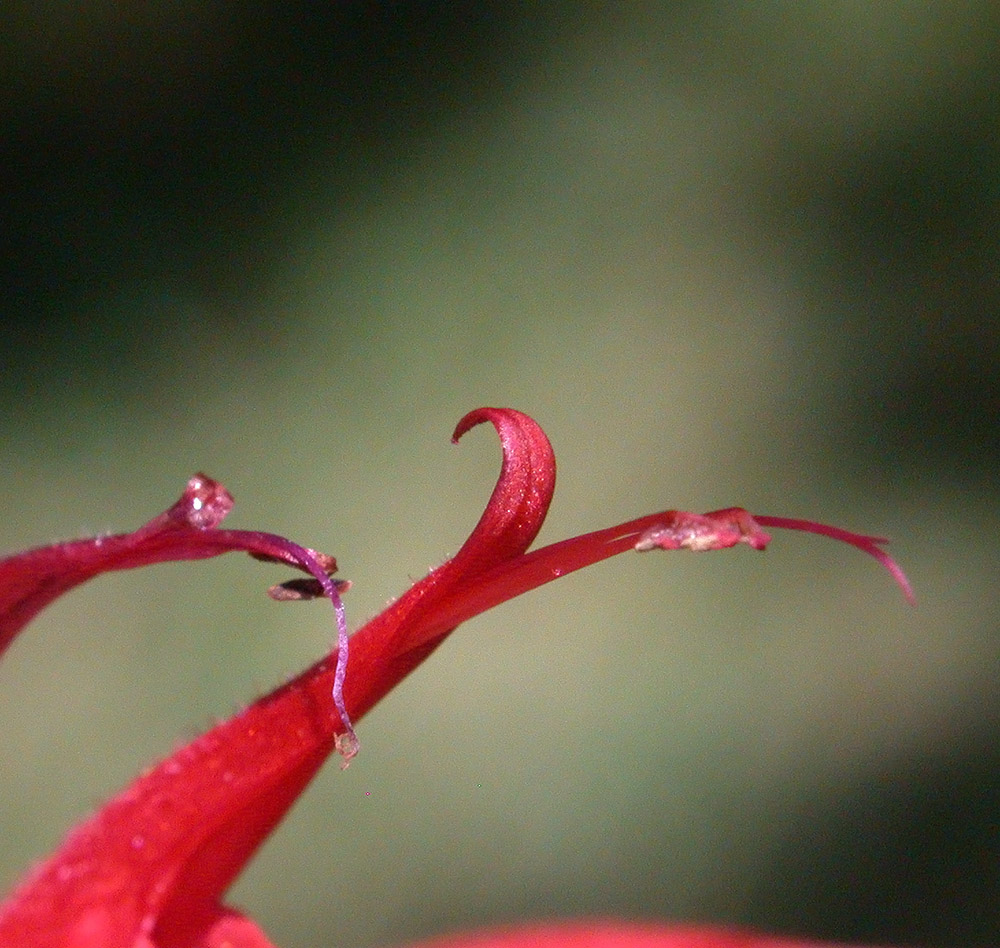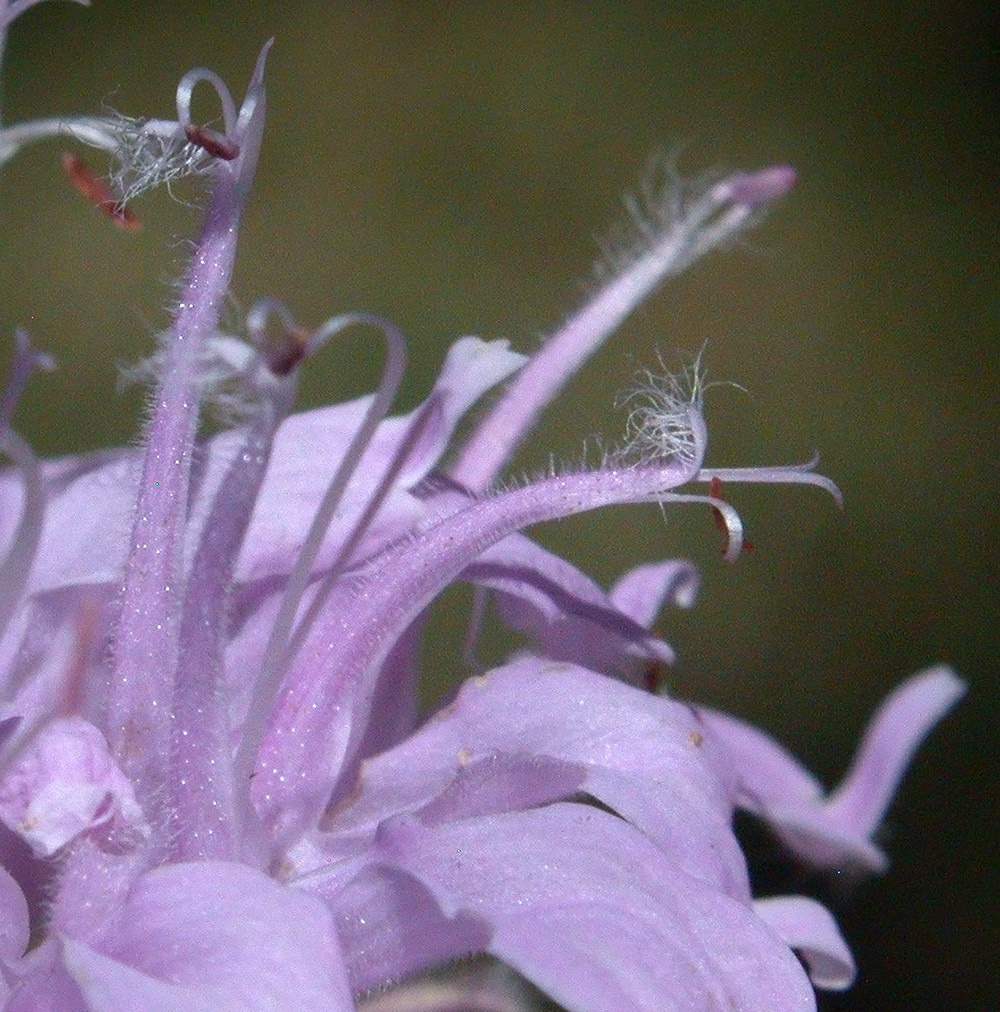For a number of years I have been growing the two common eastern species of Monarda, M. didyma and M. fistulosa. Monarda didyma (scarlet beebalm or Oswego tea) is an important early summer food source for ruby-throated hummingbirds. It begins flowering in late June but continues into July.
The flowering period overlaps with the start of flowering of M. fistulosa (wild bergamot) so there is opportunity for hybridization between the two species. Their preferred habitats, however, differ quite a bit. Monarda didyma tends to prefer moist alluvial soils and is often found in moist woods or thickets, along streambanks, or the shaded margins of wetlands. Monarda fistulosa tends to prefer somewhat drier habitats and is often found on hilltops, in meadows, or on dry gravelly river banks or shores. Those latter habitats, as well as human disturbance, have the potential to bring M. fistulosa into close contact with M. didyma.
Back to my garden, last year a Monarda appeared that has flowers that were intermediate in color and other characteristics between M. didyma and M. fistulosa.
The only explanation for these plants was that they were a hybrid of the two species and the characteristics seem to match the description of M. media in the literature.
Getting a little more specific, beyond the color there are some differences in the corollas of M. didyma and M. fistulosa. Monarda didyma has a corolla that is more than 3 cm long that is hairless on the upper lip.
In contrast, the corolla tube of M. media and M. fistulosa is up to 3 cm long. In M. fistulosa the upper lip is bearded while in M. media it is glabrous or only sparsely hairy.
A number of papers have been published that propose that M. media is a hybrid of M. didyma and M. fistulosa (Egler 1973; Whitten 1981). The fact that these intermediate plants only seem to occur where the ranges of those two species overlap would seem to support that hypothesis. The habitat for M. media is said to be dry to moist open woods, fields, and roadsides, which is rather non-specific and could easily occur in close proximity to both putative parents. It has also been suggested that in the southern Appalachians what is called M. media may be the hybrid of M. didyma and M. clinopodia. While Monarda media is treated as a distinct, rare species in a number of states, very little information is available regarding existing populations that would provide support for recognition as a distinct species, e.g. population size, proximity to populations of M. didyma and M. fistulosa, how long these populations have persisted, ect. If Monarda media is a good species, then the name for the hybrid of M. media and M. fistulosa would be Monarda × mediodes (Duncan 1959), though some sources recognize both as hybrid taxa.
Literature Cited
Duncan, W.H. 1959. A naturally occurring F1 hybrid of Monarda media and M. fistulosa. Rhodora 61: 302-305.
Egler, F.E. 1973. The hybrid nature of “Monarda media Willd.” Castanea 38(3): 209-214.
Whitten, W.M. 1981. Pollination ecology of Monarda didyma, M. clinopodia, and hybrids (Lamiaceae) in the Southern Appalachian Mountains. American Journal of Botany 68(3): 435-442.
